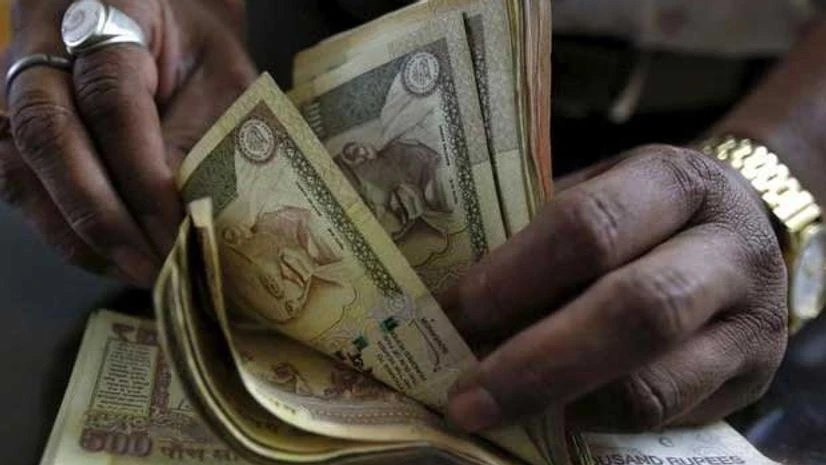Slide in the Chinese stock markets and yuan value dented the Indian rupee in the off-shore markets on Tuesday, as the Indian currency touched its lowest levels in the last 33 months at Rs.65.47 to a US dollar.
The partially convertible Indian rupee stooped to its lowest levels in the last 33 months during the intra-day trade on Tuesday. It closed at Rs 65.32 to a US dollar.
However, the impact of rupee's decline was contained as the domestic interbank foreign exchange markets were closed on account of the Parsi New Year.
The Indian rupee had touched a new two-year low at Rs.65.33 to a US dollar on Monday.
The rupee had hit its lowest level in around 23 months on August 13 at Rs.65.23 to a greenback. It had ended last week (August 14) at Rs.64.99 against a US dollar.
Analysts predict that the ripple effect of Tuesday's off-shore rupee movement to impact its standings in the domestic markets on Wednesday.
More From This Section
"The ripple effects are expected to impact the rupee movements tomorrow. However, the Reserve Bank of India (RBI) is expected to intervene in the case of a massive depreciation," Hiren Sharma, senior vice president, currency advisory at Anand Rathi Financial Services told IANS.
"The slide in the Chinese markets by around 6 percent today had spooked investors. If the trend continues then we can see another round of battering tomorrow."
Other major catalyst for the rupee's fall has been the devaluation of yuan, intended to boost Chinese exports.
China's central bank devalued yuan by two percent on August 11. This was the biggest devaluation in the Chinese currency since 1994.
The currency fell again by another two percent on August 12 panicking the world economy.
The measure to devaluate the yuan is seen as an attempt to arrest the implosion in the Chinese markets. Othere, however view it as an attempt to corner the international export markets from other emerging trading powers such as India and the Asean (Association of Southeast Asian Nations) grouping.
The move has strengthened the dollar value, which has negatively impacted major world currencies including the Indian rupee.
"The Indian rupee continues to react negatively to the Chinese yuan's devaluation. The yuan has fallen by 4.6 percent till now since August 11. All the major Asian currencies are at their lowest levels since the Asian financial crises," Anindya Banerjee, senior manager for currency derivatives with Kotak Securities, told IANS.
The world markets are fearful of the fact that the $10 trillion dollar-worth Chinese economy has the ability to dump unlimited amount of goods and services, thereby cornering the entire international exports customers.
"The Chinese have estimated that their currency is nearly 25-30 percent more expensive than its peers in the emerging markets. They have hinted at further devaluation but that kind of a move will be gradual," Sharma elaborated.
Meanwhile, Banerjee pointed out that the international fluctuations has widened the RBI's comfort zone regarding rupee's movements.
The Reserve Bank has been pretty active in the forward purchase markets since the last 22 months. It used to sell dollars whenever the rupee crossed the Rs.64 mark and buys when it falls below Rs.63 to a dollar.
Though at a very short movement, RBI was seen comfortable that time with the rupee ranging anywhere between Rs.63.20-Rs.64.30 per dollar.
"Given the new reality of yuan devaluation, stalled reforms, deficient monsoon and high interest rates, the RBI's comfort range will be some where between Rs.64.20-Rs.65.30 per dollar in the short term," Banerjee said.
The RBI's strong control over the rupee had given the currency strength and resilience to withstand international financial crisis like the recent Greece debt issue.
Experts further cited factors such as a sharp fall in July trade data, deficient monsoon rainfall and diminishing hopes of a rate cut coupled-with the upcoming decision on interest rates by the US Fed as other major reasons for the rupee's slide.

)
